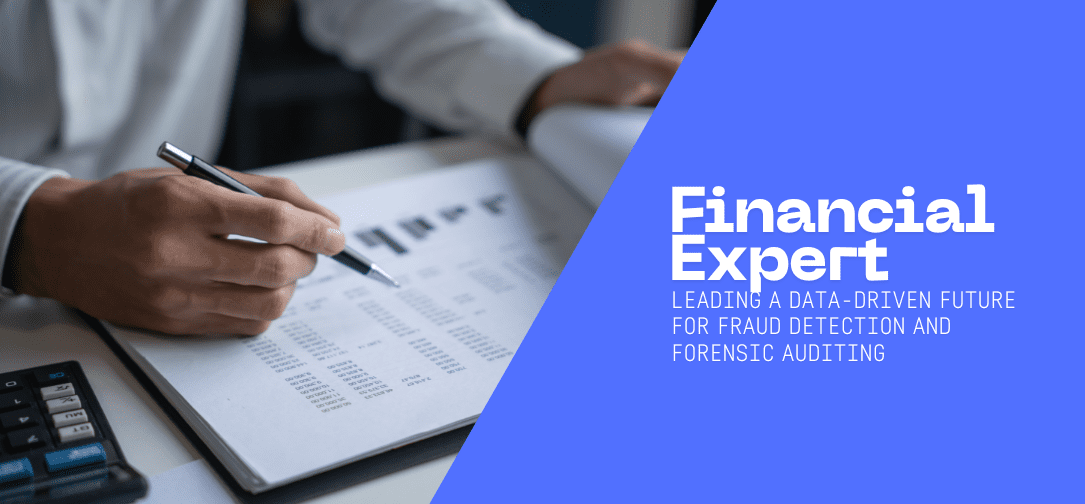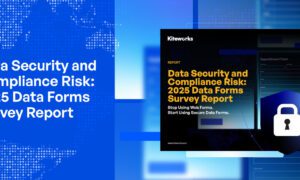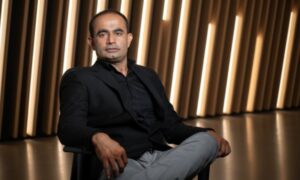The UK financial sector has been facing a fraud epidemic that shows no sign of slowing down. According to industry surveys in 2020, losses from scams and financial crime reached some of the highest levels on record, fuelled by cyber-enabled attacks, phishing schemes, identity theft, and organized financial crime networks. The acceleration of digital transactions during the pandemic, combined with economic pressures and rapidly evolving fraud tactics, has left many institutions struggling to keep up. Traditional, rule-based monitoring systems and manual audits have repeatedly been caught flat-footed, detecting fraud only after the damage has been done. The result has been billions of pounds in losses, regulatory fines, and shaken public confidence.
Against this backdrop, financial expert Ibidapo Abiodun Ogundeji has stepped forward as a leading voice advocating a data-driven transformation of fraud detection and forensic auditing. His research, detailed in the paper Enhancing Fraud Detection and Forensic Auditing through Data-Driven Techniques for Financial Integrity and Security, is a call to action for financial institutions, regulators, and auditors to embrace advanced analytics, machine learning, blockchain, and automation to stay ahead of financial crime. His work positions fraud detection not as a defensive, backward-looking function but as a predictive and preventive shield for the financial system.
“Fraud detection can no longer be an afterthought,” Ibidapo says, speaking with conviction. “We must catch fraud as it happens — or better yet, before it happens. The financial system depends on trust, and that trust must be actively protected.”
The paper is a comprehensive review of how big data analytics and artificial intelligence can reshape fraud prevention. It argues that static, rules-based systems are no longer sufficient because fraud tactics evolve faster than fixed controls. Instead, Ibidapo proposes a layered model that draws on supervised and unsupervised machine learning to detect anomalies across millions of transactions in real time. These models learn continuously, adapting to new threats and reducing false positives with every iteration.
“AI-driven systems give us agility,” he explains. “They allow institutions to respond to emerging threats faster than fraudsters can exploit them. Every fraudulent transaction detected today makes the system smarter for tomorrow. This is how we get ahead instead of constantly playing catch-up.”
One of the most striking aspects of Ibidapo’s work is his emphasis on explainable AI (XAI). In a regulatory environment where transparency is not only encouraged but required, he highlights the risk of relying on black-box algorithms that even their creators cannot fully explain. “When a transaction is flagged, compliance officers need to know why,” he says. “A black-box model cannot stand up in an audit or a court of law. Transparency is not optional — it is what builds trust between institutions, regulators, and the public.”
This focus on explainability places his work firmly in line with the UK’s growing emphasis on algorithmic accountability and fairness. With financial regulators looking to ensure that automated systems are not introducing bias or unjustified customer impacts, his call for models that are both accurate and interpretable could not be more relevant.
Beyond AI, the paper explores other transformative technologies. Blockchain, with its tamper-proof distributed ledger, offers a way to create immutable audit trails that make it virtually impossible for bad actors to manipulate records after the fact. “Blockchain offers a level of accountability we have not seen before,” Ibidapo explains. “When every transaction is immutable and verifiable, we reduce opportunities for fraud and build trust in the financial system.”
Robotic process automation (RPA) is also a central component of his model, allowing for 24/7 transaction monitoring without the fatigue or inconsistency that comes with human review. RPA bots can flag suspicious activities in real time, escalating them for human investigation and ensuring that no anomaly slips through the cracks. “Automation frees human auditors to focus on complex, judgment-based cases where their expertise has the most impact,” Ibidapo says.
Network analysis is another powerful tool highlighted in his research. By mapping relationships between entities and accounts, investigators can uncover collusive fraud rings and money-laundering networks that traditional transaction-by-transaction monitoring would never catch. “Fraud is rarely committed in isolation,” Ibidapo notes. “Our ability to detect entire networks of bad actors, not just single transactions, is what gives financial oversight its full power.”
The results cited in his paper are compelling. AI-driven fraud detection systems have been shown to reduce fraudulent transactions by 60 percent and cut detection times by 70 percent compared to manual or rule-based systems. Forensic audits powered by advanced analytics have uncovered irregular expense classifications and revenue manipulation that had persisted for years undetected, leading to prosecutions, strengthened internal controls, and improved corporate governance.
Yet Ibidapo does not gloss over the obstacles. He acknowledges the challenges of data privacy, the significant upfront costs of deploying advanced systems, and the shortage of professionals trained to build and maintain these models. His recommendations, however, are practical and actionable: deploy privacy-preserving techniques such as anonymization and encryption, conduct algorithm audits to eliminate bias, and invest heavily in workforce training to close the talent gap. “Technology alone is not the answer,” he warns. “Governance, training, and clear policies are critical. A model is only as good as the people who deploy and interpret it.”
He also stresses the need for collaboration across institutions. Fraud often spans multiple banks, payment processors, and jurisdictions, making a siloed response inadequate. “Fraud is not a problem any single institution can solve alone,” he cautions. “It requires collaboration, shared intelligence, and coordinated action. Fraudsters are networked — our response must be as well.”
For the UK, where fraud is now the most common crime and has been described as a threat to national security, Ibidapo’s research reads like a roadmap for systemic reform. It offers a way to meet rising regulatory expectations, protect consumers, and restore confidence in a financial system under strain. His emphasis on combining real-time analytics with clear governance speaks to the dual challenge faced by British institutions: innovating quickly while maintaining public accountability.
The forward-looking aspect of Ibidapo’s work is particularly striking. He calls for exploring federated learning, which allows multiple institutions to jointly train fraud detection models without sharing raw data — an approach that protects privacy while boosting model accuracy across the industry. He also looks ahead to the impact of quantum computing on both cybersecurity and fraud detection, urging financial leaders to invest early in quantum-safe encryption to protect sensitive data from future threats. “We are at a turning point,” he says. “The tools we build today will determine how secure our financial system is over the next decade.”
Ibidapo’s paper reframes forensic auditing as more than a backward-looking exercise. Instead of simply cataloging what went wrong, he envisions auditing as a proactive shield that prevents future failures. “Auditing should not just tell us what happened,” he insists. “It should prevent the next crisis. That is the future I am working toward.”
The strength of his approach lies in its balance of innovation and accountability. He does not promote technology for its own sake but as part of a broader governance framework that includes ethics, compliance, and transparency. His model allows financial institutions to not only detect fraud earlier but to reduce operational losses, enhance investor confidence, and strengthen regulatory compliance — benefits that resonate strongly with industry leaders seeking to protect their reputations in an increasingly transparent market.
The paper’s detailed review of case studies reinforces its credibility, showing that data-driven solutions deliver measurable impact. Fraud losses drop, investigations close faster, and forensic teams can focus their efforts where they matter most. “The data does not lie,” Ibidapo says. “When you have the right systems in place, you uncover patterns that change how organizations operate.”
As the financial world becomes more digitized, the stakes have never been higher. Economic crime drains billions from economies, threatens investor confidence, and undermines the fairness of financial markets. Ibidapo’s work argues that the future of financial integrity depends on building smarter, more adaptive systems that match the speed and sophistication of modern fraud.
Looking ahead, he calls for stronger links between researchers, technologists, and policymakers to accelerate the deployment of cutting-edge fraud detection tools. He suggests regulatory sandboxes where new technologies can be tested safely, allowing for rapid innovation without risking systemic stability. “We must shorten the innovation cycle,” he argues. “By testing new models in controlled settings, we can deploy them faster and protect the system sooner.”
In the final analysis, Ibidapo Abiodun Ogundeji’s contributions offer hope that the tide of financial crime can be turned. His vision of fraud detection is proactive, predictive, and collaborative, combining the best of technology with the rigor of governance and ethics. By moving beyond reactive controls, his research equips financial professionals to anticipate risks, neutralize threats, and protect public trust.
“As financial experts, we have a duty to protect not just balance sheets but public confidence in the system,” he concludes. “Every advance we make in fraud detection safeguards economic stability and builds a safer financial future for everyone.”
In a year when UK fraud figures have drawn headlines and prompted calls for reform, Ibidapo’s message is timely and urgent. The choice, he suggests, is not whether to modernize fraud detection but how quickly we are willing to act. For financial institutions, regulators, and policymakers, his work is more than an academic study — it is a playbook for resilience in an era where financial crime is relentless, organized, and increasingly digital.



































